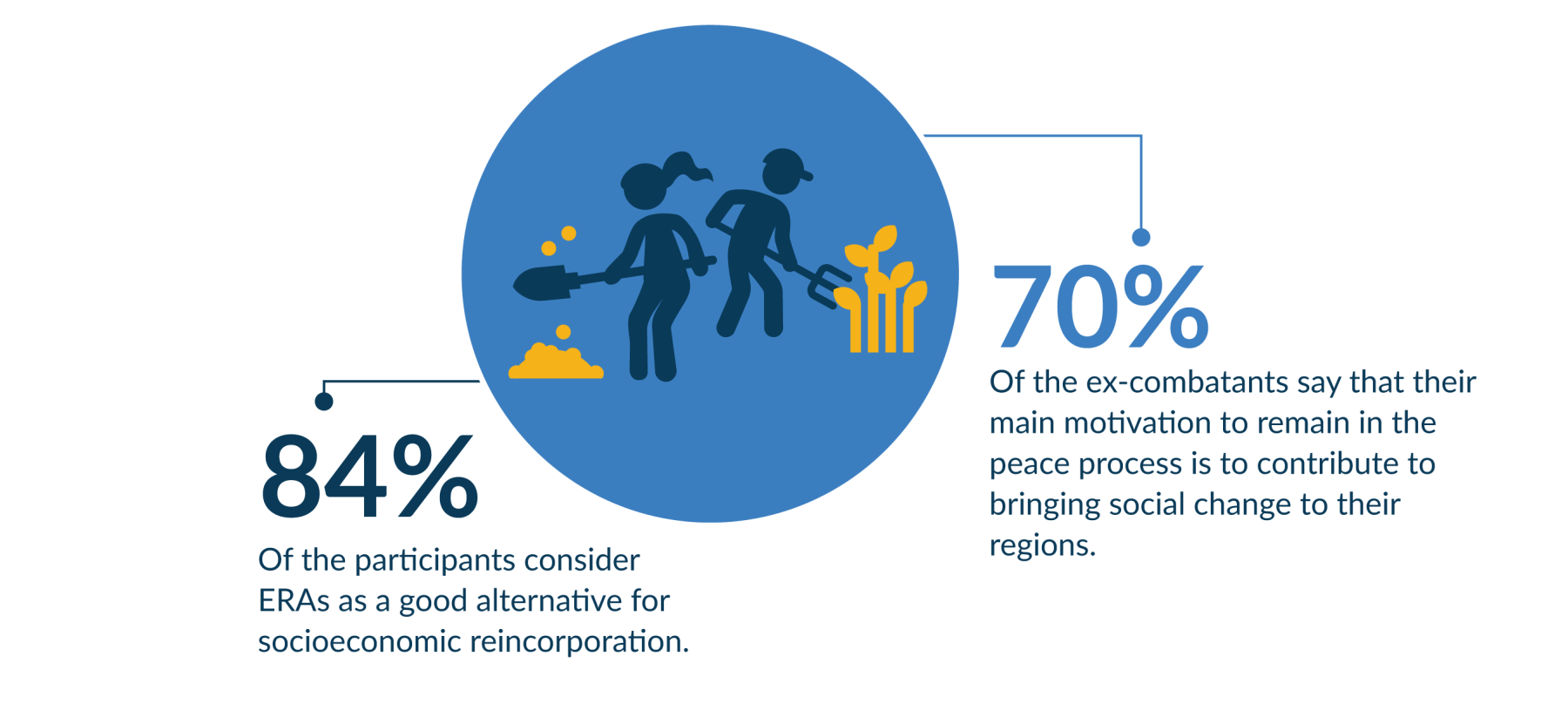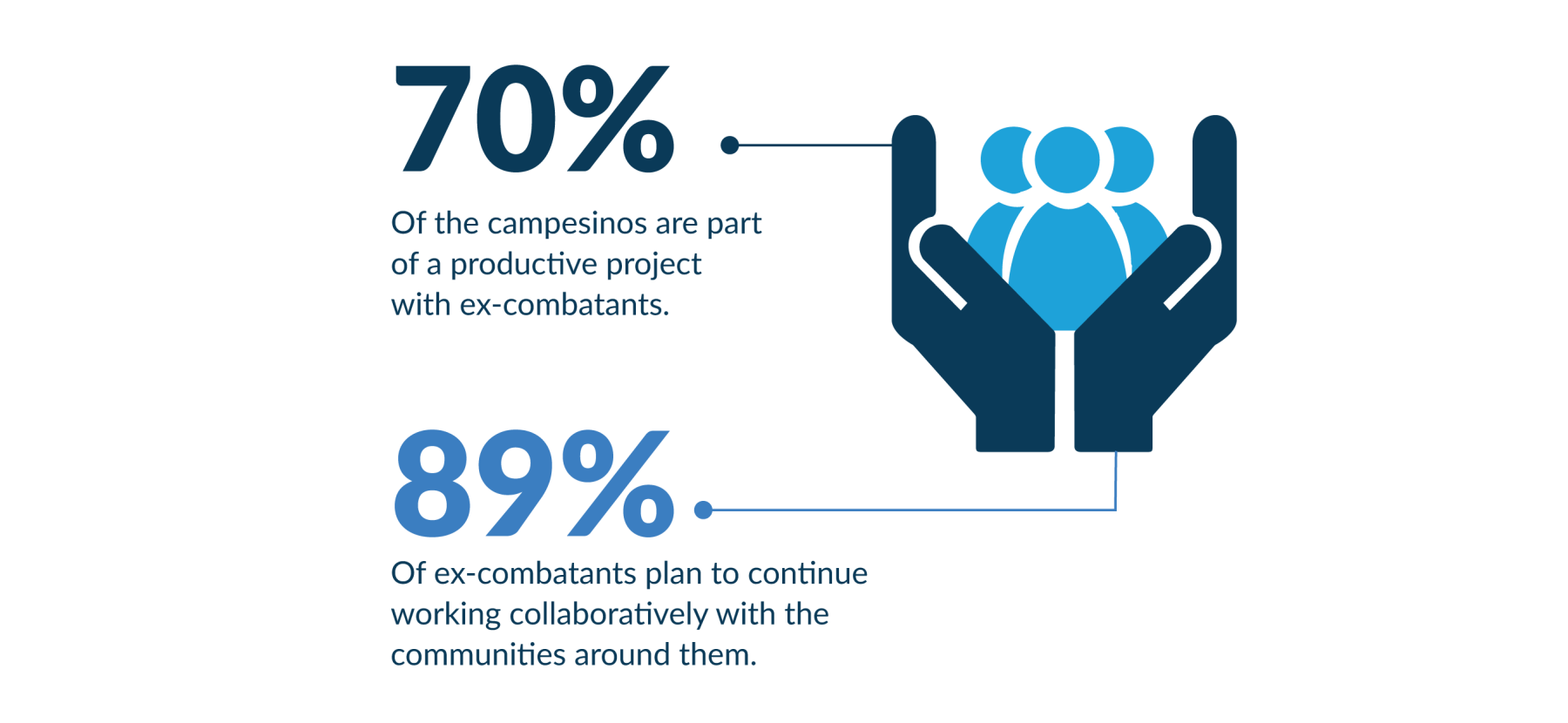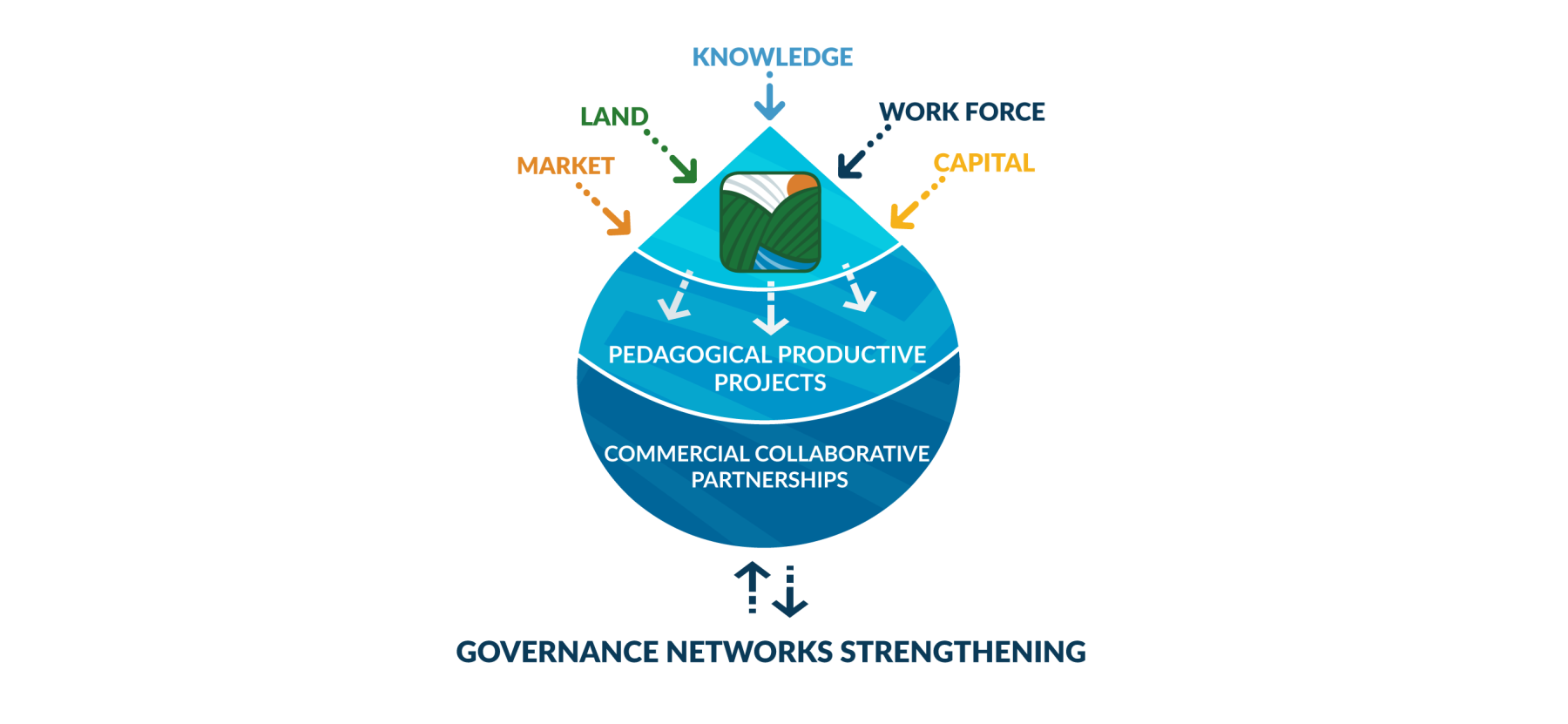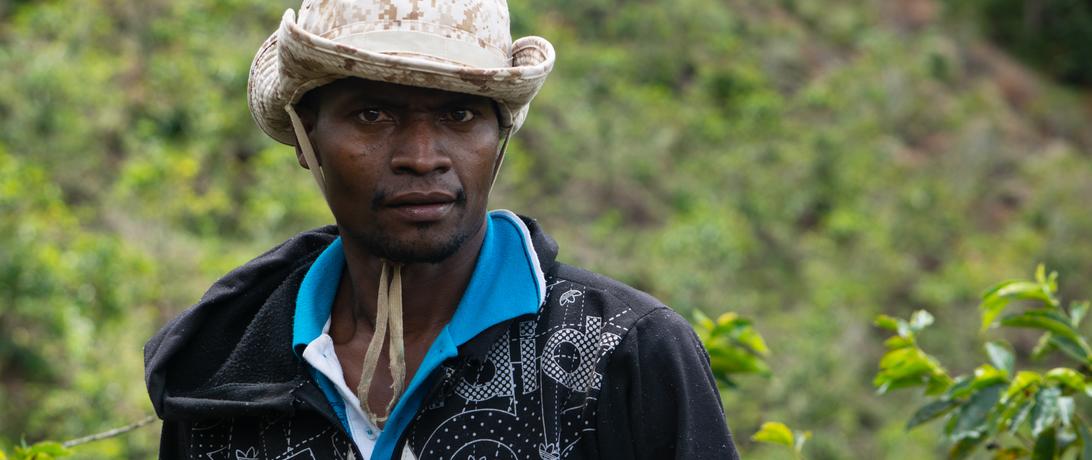To continue sharing the lessons learned with people and institutions interested in building peace through sustainable rural development in Colombia, in this issue of “Tracking Our Impact” we analyze why Rural Alternative Schools (ERA) are considered by 84 percent of their participants as a good socioeconomic reincorporation alternative. This analysis is based on results from the chapter “Future Perspectives on the Reincorporation Process” of the 2020 ERA Perception and Satisfaction Survey.
In the previous article we explained that one of the main motivations of respondents to remain in the peace process is to contribute to effect social change in their region. After five years of consolidation as spaces for collaboration, trust-building, and support for productive projects that promote sustainable rural economies, ERAs have become spaces that catalyze the creative and transformative energy of ex-combatants, creating short- and medium-term changes that can already be observed in the territories they inhabit. This explains why 98 percent of the participants consider that the collaborative productive projects in which they participate have been important for their regions.

Economic Reincorporation and Collaborative Reconstruction of the Colombia Countryside.
November 24 marked five years since the signing of the Peace Agreement between the Colombian government and the former guerrilla group FARC-EP. While peace talks moved forward, One Earth Future Foundation designed the Sustainable Peace for Colombia (PASO Colombia) program to support the economic reincorporation of those who agreed to lay down their arms. Using an iterative and data-driven approach and in collaboration with ex-combatants, campesino (rural peasant) communities, and public and private organizations, PASO Colombia developed the Rural Alternative Schools (ERA) model, a collaborative educational and productive platform to support productive projects that would positively impact the social and economic well-being of ex-combatants and campesinos.
Acknowledging that rural communities have been most affected by armed conflict, PASO Colombia incorporated the territorial and multi-stakeholder approach enshrined in the Comprehensive Rural Reform described in Item 1 of the Peace Agreement. The purpose of this approach is to support the economic reincorporation of those who lay down their arms as a driver of the transformations needed to consolidate peace in the country’s dispersed rural areas. One of these transformations is the improvement of living and working conditions for campesinos. Those who live in rural areas are affected by a permanent lack of safety, insufficient work remuneration, high transportation and supply costs, and lack of social care for local communities.
In this context, ERAs have consolidated as stakeholder integration platforms through dialogues, daily collaborative work, and prioritized long-term objectives based on collective consensus-building processes. As a whole, ERAs have fostered the creation of community bonds among their participants: 76 percent of the community members feel that their relationship with ex-combatants has been positive or very positive, 83 percent of campesinos feel comfortable having an ex-combatant as a neighbor, and 70 percent report that they are part of some productive project with ex-combatants.

In the communities that emerged thanks to ERAs, social reincorporation helps reduce stigmatization, divisions, and other obstacles to the integration of various stakeholders. Eighty-nine percent of the ex-combatants indicate that they plan to continue working collaboratively with their surrounding communities, and 91 percent of them feel satisfied by having reestablished their family bonds.
The Collective Experiment in Economic Reincorporation
One of the novelties of the Peace Agreement is the collective nature of economic reincorporation. Consequently, ERAs promote associative models in which people living in the same territory can cooperate to create economies of scale or find solutions to shared problems. Eighty-three percent of the surveyed participants reported belonging to a cooperative, and 74 percent of them are active members of a cooperative whose projects are associated with ERAs. Strengthening associations and cooperatives of ex-combatants and campesinos increases their capacity to create productive value chains, participate in discussions on the development of their territories with other institutions, and expand marketing opportunities for their projects.
The ERA model relies on collaboration to coordinate five fundamental components for the sustainability of the productive projects prioritized with communities: markets, land, knowledge, labor, and capital. The surveyed participants agreed that the most important aspects for their reincorporation process are the following: owning their own land (85 percent), participating in productive projects (82 percent), and marketing their products (80 percent). The collaborative and networking approach has proven to be effective in overcoming obstacles such as lack of land or access to markets. It also expands its benefits to the surrounding communities.

For example, in 2016 the ERA of Miranda was established in five hectares of common land in the Campesino Reserve Zone (ZRC, as per its Spanish acronym) of Miranda, which were ceded by the Association for Defending the Constitution of the Campesino Reserve Zone of Miranda (ASPROZONAC, as per its Spanish acronym), who partnered with the ex-combatant cooperative CEPRODET. In the beginning of this ERA, only 10 percent of the 105 hectares in the Reserve Zone were cultivated with food crops. Today, after five years of collaborative work, almost all of the reserve’s agricultural land is cultivated with crops for self-consumption and local commercialization. As part of this productive expansion, ex-combatants and campesinos created the Peace Alternative Market (MERCAPAZ) in the municipality of Miranda, a space for marketing local agricultural products without the intervention of middlemen.
Another emblematic case is the ERA of San José del Guaviare. This project began with the purpose of producing organic concentrates to ensure feed for animal husbandry projects created by ex-combatants and now benefits the surrounding communities. These concentrates are made by reusing agricultural by-products and local raw materials. Their implementation has encouraged the use of land for food crops, helps recover soils degraded by deforestation and illicit crops, and increases the sustainability of agricultural projects by reducing the costs and environmental impact of animal husbandry supplies. Ex-combatant cooperatives participating in the ERA (COOJAPAL and COOAMACOL) created a Collaborative Commercial Partnership with campesino families in the village of Colinas, who receive a 30 percent discount on animal feed. Ex-combatants also sell these concentrates at a 40 percent discount to families who voluntarily replaced their illicit crops. Experts from National Training Service (SENA, as per its Spanish acronym) and Universidad de los Llanos have been involved in the project to improve technological development in production. This is project is under a scaling-up stage aimed at tripling its monthly production.
Expectation on peacebuilding
Our experience in the last five years of work shows us that collaborative spaces such as ERAs, which are built on multi-stakeholder partnerships and work with ex-combatants and campesino communities as partners, allow us to create support networks for productive projects, thus enabling coexistence spaces with improved perceptions of security, trust, and more opportunities for dialogue —as we discussed in previous issues of “Tracking Our Impact.” The joint effort of the last few years has allowed us to witness how the social fabric of communities affected by armed conflict has strengthened in different parts of the country where this model has been implemented. By 2020, 91 percent of the ex-combatants participating in ERAs and 90 percent of the community members stated that their experience in ERAs had been positive or very positive. Similarly, 70 percent of ex-combatants participating in them have an optimistic attitude toward the future of the reincorporation process, whose implementation has been planned for a period of fifteen years and will be a continuous challenge for those who are fully devoted to peacebuilding.
